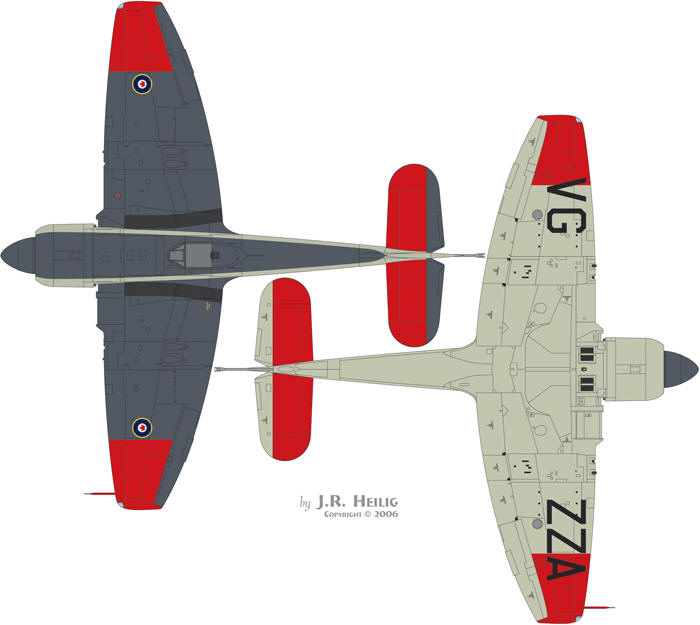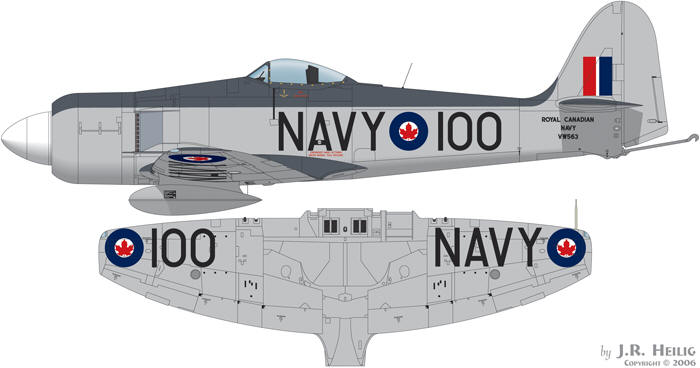The first odd man out is FB.11 TG117. This
aircraft was one of the original 1948 batch, and the only one of
that group delivered in the Pattern
2a camouflage scheme. Destined from the
outset for service with the Winter Experimental Establishment
(a non-combat unit), the aircraft
was allocated the unit identifier
"ZZ", and carried the individual aircraft code "A".
The early RCN style roundel and fin flash (of incorrect proportions)
were applied in the UK, as were the letter codes, with the "ROYAL
CANADIAN NAVY" identifier in a single line on the aft
fuselage providing evidence of this. For its service in the far
north, the outer wing panels (less the ailerons) and horizontal
stabilizers (less the elevators) were painted red above and below.
The illustration below shows how the
aircraft appeared when first delivered to the WEE in 1948.


TG117 was later overhauled and repainted by
Avro Canada into what amounts to the Pattern 4 scheme. As noted
above, the existence of a Pattern 4 scheme at this early date
indicates that Avro actually initiated this variation, but did not
apply it consistently. Codes were reduced in size on the fuselage,
and somewhat unusually, split so that on the left hand side the
roundel split the unit
identifier. On the right side the code read "ZZ•A" as
would be expected. This aircraft was lost in a fatal crash in 1951.

Sea Fury FB.11 TG114 of 870 Squadron was
uniquely marked. For reasons unknown, although perhaps for an
airshow display, this aircraft featured a large black-soutlined
"NAVY" in a light color (yellow is believed to be correct) on the
side of the fuselage. Markings were otherwise standard
for the Pattern 3 scheme and the 1951
timeframe in which it was photographed.

On one occasion, a simple matter of not paying
attention to which side of the airplane he was on likely led a
painter at Fairey Aviation of Canada,
Ltd. to apply the lower wing "NAVY" and aircraft code to the wrong
wings on VW563. An additional error on this scheme is the maple
leaves in the roundels that are touching the edges of the
white disk, contrary to the standard set by the RCN. This aircraft
also displays the white spinner sometimes used by VF 871.
Seen aboard the Maggie during Exercise Mariner
in September 1953.

Home |
What's New |
Features |
Gallery |
Reviews |
Reference |
Forum |
Search